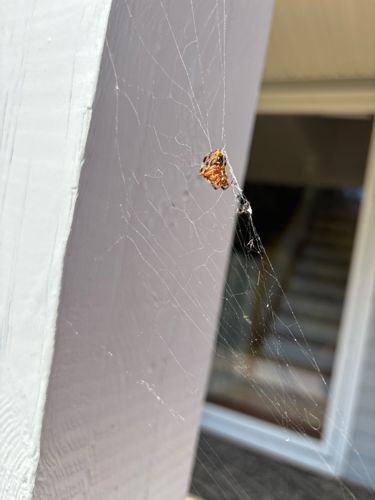Marbled Orb-weaver
Scientific Name: Araneus marmoreus
Order & Family: Araneae, Araneidae
Size: Females typically 8-14 mm, males 5-8 mm (excluding leg span).

Natural Habitat
Gardens, forests, meadows, and areas with tall vegetation where they can construct their webs. Often found near human structures like houses and barns.
Diet & Feeding
Mainly flying insects that get caught in their webs, such as flies, moths, mosquitoes, and sometimes other small arthropods.
Behavior Patterns
Marbled Orb-weavers are known for building large, intricate orb webs, often several feet in diameter, usually oriented vertically between vegetation or structures. The female typically rests in the center of the web or in a retreat nearby. They rebuild their webs frequently, often daily, particularly if damaged. They are nocturnal hunters, though they may remain on the web during the day. The distinctive orange and yellow coloration often serves as a warning or camouflage.
Risks & Benefits
Benefits: They are beneficial as natural pest control, catching and consuming many common insect pests. Risks: They are not considered dangerous to humans. Their venom is not medically significant, and a bite (which is rare and usually only occurs if provoked) would typically result in localized pain, redness, and swelling similar to a bee sting. They are not aggressive.
Identified on: 10/18/2025